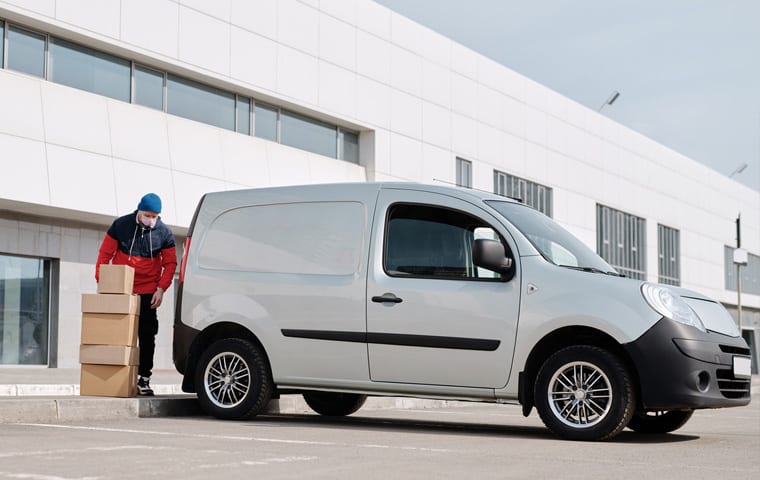Technology is everywhere today, and it’s evolving at an unprecedented rate. In fleet operations, this allows fleet managers to do something that was unheard of in prior generations: monitor vehicles while they’re in the field.

Monitoring drivers and vehicles gives you detailed information about the performance and condition of your fleet. It can also help you optimize your fleet’s operations to take advantage of all of your resources with usage reports and detailed telematics.
But what is remote vehicle monitoring? How does it work? And why should you install this technology in your fleet?
What is Remote Vehicle Monitoring?
If you’re not familiar with the term, you might think remote vehicle monitoring is the same thing as GPS tracking, but that doesn’t completely encompass what we’re talking about. GPS tracking simply tells you where your vehicle is at any given time. While that alone is incredibly useful, it doesn’t really give you the full story.
We define remote vehicle monitoring as a vehicle monitoring system that tracks and reports on the vehicle’s status. This includes vehicle tracking, diagnostics, and utilization. In addition to telling you about your vehicle’s geographic location, you’ll also learn how well it’s performing, whether it’s due for upcoming maintenance, and whether the driver has enough time left on his shift to add on one more stop.
How Does Remote Vehicle Monitoring Work?
We know that GPS tracking works by sending signals to satellites in orbit and relaying the information back to systems on the ground. Remote vehicle monitoring does this as well, but it also communicates with your vehicle’s onboard computer system.

Modern cars and trucks have onboard computers that monitor many of the mechanical systems that keep the vehicle running. In years past, the computer would then communicate any problems to the driver by lighting up various warning indicators on the dashboard. Today, most cars have a more detailed reporting screen, but the principle remains the same.
In remote vehicle monitoring systems, a device is connected to the onboard computer through the OBD II port or through other means. The device then communicates with the computer and relays this information, as well as GPS coordinates, to a remote location via telematics. The fleet manager can keep track of all of the vehicles in his or her fleet from a single device, with plenty of details on vehicle performance, mechanical condition, and even driving behavior.
Why Your Fleet Needs Remote Vehicle Monitoring
If the computer already communicates with your drivers, and you already have GPS tracking installed in your fleet vehicles, why would you need to upgrade to a remote vehicle monitoring system? There are plenty of advantages that this technology can give you that go well beyond the check engine light on the dashboard.
In today’s economy, data is key. The more information you can gather about your fleet’s processes and performance, the better your management decisions will be.

With remote vehicle monitoring, you can implement a predictive maintenance program that keeps your vehicles running at peak performance longer. When your vehicle’s onboard computer first detects a problem, you’ll know immediately. You can then repair or replace the affected parts, long before a breakdown would occur.
You can also monitor the driving habits of your employees, allowing you to correct dangerous behaviors before they lead to accidents. The remote vehicle monitoring device can tell you when drivers exhibit unsafe habits such as speeding or hard braking. A video coaching program can then provide a training curriculum custom-tailored to each driver’s habits. Safe driver rewards give your drivers incentive to improve their driving habits in a fun competitive environment. All of this leads to safer drivers, safer roads, and less liability.
You can even save money on fuel costs and insurance premiums, boosting your company’s bottom line in the process. With appropriate telematics reporting, you can decrease engine idling and wasteful fuel consumption. You can also easily guide drivers to the nearest fuel station that participates in your preferred fuel card program. Plus, insurance companies love GPS tracking and its safety benefits, many even offering discounts for fleets covered by remote vehicle monitoring.
If you’re considering remote vehicle monitoring for your fleet but not sure if it’s worth the cost, check out our ROI calculator to see how you can make Azuga Fleet pay for itself. Then schedule an Azuga demo to see all that Azuga can offer your fleet.








